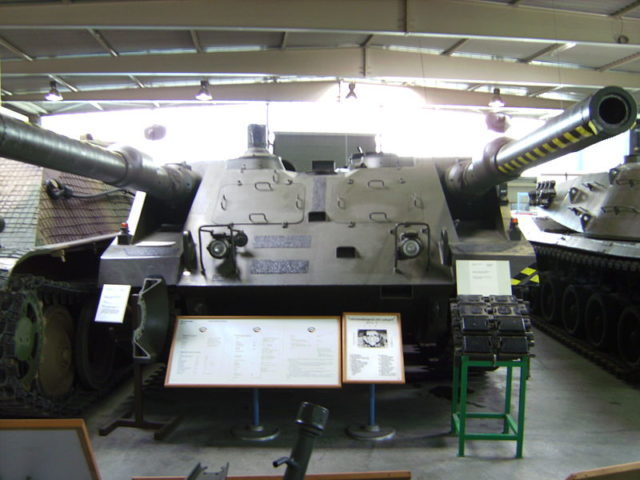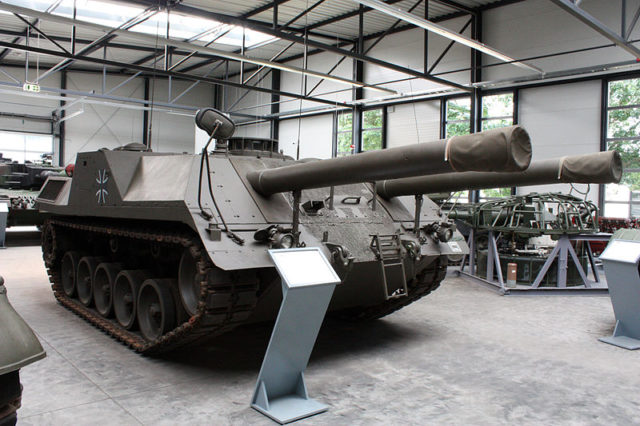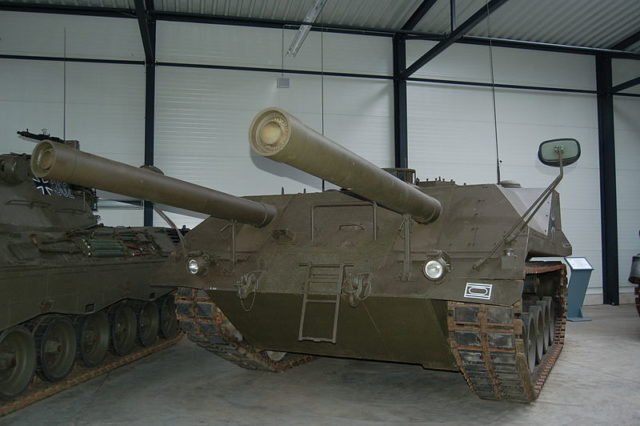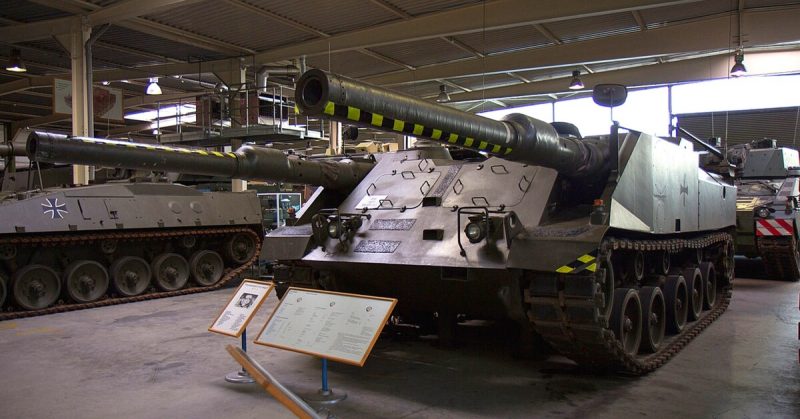During the 1970s the post-war German Army, The Bundeswehr, was producing new tank designs, which were intended to live up to their predecessors. The Leopard 1 proved to be a success, and the next generation of the tank was already under way. Having finalized the requirements of the main battle tank with the Leopard design, the Germans turned to other options.
As the Cold War intensified, there were already several undeveloped prototypes within the Bundeswehr designs. One of them was the MBT-70, a joint German-American main battle tank project.

The MBT had been abandoned, and the chassis produced for the prototype was redirected to serve for another purpose. The Maschinenbau Kiel Industries were tasked with fitting two 105 mm guns on a turretless chassis of the MBT-70. The result was the Kampfpanzer 3 (KPz 3), codenamed VT tank; VT was short for Versuchsträger, meaning experiment carrier.
During the 1960s and early 1970s, the USSR had managed to produce some of the most reliable tanks ever made. The T-62 and the T-72 were able to withstand the 90 mm gun of the German tank destroyer Kanonenjagdpanzerand. This model, therefore, became obsolete, making the production of a new and effective tank destroyer necessary.

The project was at first supported by the British. However, they backed out. They were more interested in a tank with a functioning turret, and not the destroyer-type unusual design which was the VT tank.
In 1974 the first twin gun tank, entitled simply the VT-1-1, rolled off the production lines and went into testing.
The initial version was armed with two 105 mm rifled guns. The next prototype the VT-1-2, produced shortly after, was upgraded to carry 120 mm smoothbore guns. This version satisfied the requirements needed to face the Soviet tanks in combat.
The big flaw of the initial prototype had been its manual loading system, which required a crew of four. The VT-1-2 was significantly improved by the autoloader, lowering the crew to three thereby giving more space. The autoloader also excluded the human factor regarding reliability and speed.

The second improvement were the 120 mm smoothbore guns. They were not only larger in caliber but, apart from other traits, were capable of firing anti-tank missiles giving them a longer range and more firepower.
The third improvement was the engine upgrade. The VT models were intended to provide superiority not only with their firepower and accuracy but also by employing their engine and suspension. The prototypes used thick frontal armor for protection and practiced a driving technique called Wedelkurs, meaning the tank zig-zagged to avoid a direct hit.
Unfortunately, the VT tanks were never mass produced, as the twin-gunned turretless tank proved to be too difficult to adapt to standard tactics. Their design was probably viewed as too off-beat to be introduced into regular service.
Also, some drawbacks occurred during testing. It was abandoned, in the wake of the Leopard 2 introduction.
Apart from the VT 1-1 and 1-2, there was a third design, entitled GVT. It was never armed, nor entered production. Instead, it was equipped only with laser fire simulators for further testing, but the project was canceled and abandoned, like the previous versions.
